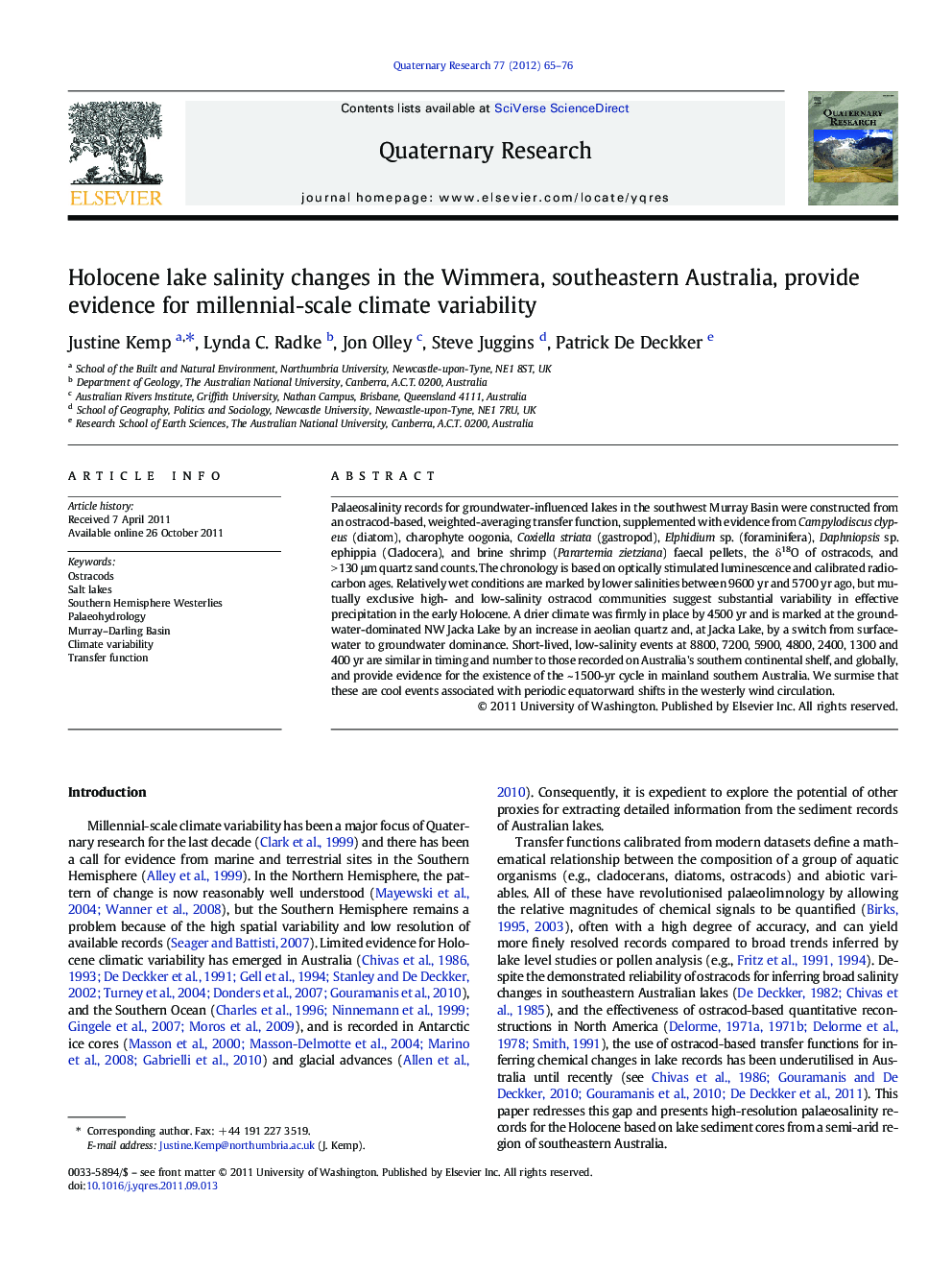| کد مقاله | کد نشریه | سال انتشار | مقاله انگلیسی | نسخه تمام متن |
|---|---|---|---|---|
| 10501237 | 944834 | 2012 | 12 صفحه PDF | دانلود رایگان |
عنوان انگلیسی مقاله ISI
Holocene lake salinity changes in the Wimmera, southeastern Australia, provide evidence for millennial-scale climate variability
دانلود مقاله + سفارش ترجمه
دانلود مقاله ISI انگلیسی
رایگان برای ایرانیان
کلمات کلیدی
موضوعات مرتبط
مهندسی و علوم پایه
علوم زمین و سیارات
زمین شناسی
پیش نمایش صفحه اول مقاله

چکیده انگلیسی
Palaeosalinity records for groundwater-influenced lakes in the southwest Murray Basin were constructed from an ostracod-based, weighted-averaging transfer function, supplemented with evidence from Campylodiscus clypeus (diatom), charophyte oogonia, Coxiella striata (gastropod), Elphidium sp. (foraminifera), Daphniopsis sp. ephippia (Cladocera), and brine shrimp (Parartemia zietziana) faecal pellets, the δ18O of ostracods, and > 130 μm quartz sand counts. The chronology is based on optically stimulated luminescence and calibrated radiocarbon ages. Relatively wet conditions are marked by lower salinities between 9600 yr and 5700 yr ago, but mutually exclusive high- and low-salinity ostracod communities suggest substantial variability in effective precipitation in the early Holocene. A drier climate was firmly in place by 4500 yr and is marked at the groundwater-dominated NW Jacka Lake by an increase in aeolian quartz and, at Jacka Lake, by a switch from surface-water to groundwater dominance. Short-lived, low-salinity events at 8800, 7200, 5900, 4800, 2400, 1300 and 400 yr are similar in timing and number to those recorded on Australia's southern continental shelf, and globally, and provide evidence for the existence of the ~ 1500-yr cycle in mainland southern Australia. We surmise that these are cool events associated with periodic equatorward shifts in the westerly wind circulation.
ناشر
Database: Elsevier - ScienceDirect (ساینس دایرکت)
Journal: Quaternary Research - Volume 77, Issue 1, January 2012, Pages 65-76
Journal: Quaternary Research - Volume 77, Issue 1, January 2012, Pages 65-76
نویسندگان
Justine Kemp, Lynda C. Radke, Jon Olley, Steve Juggins, Patrick De Deckker,